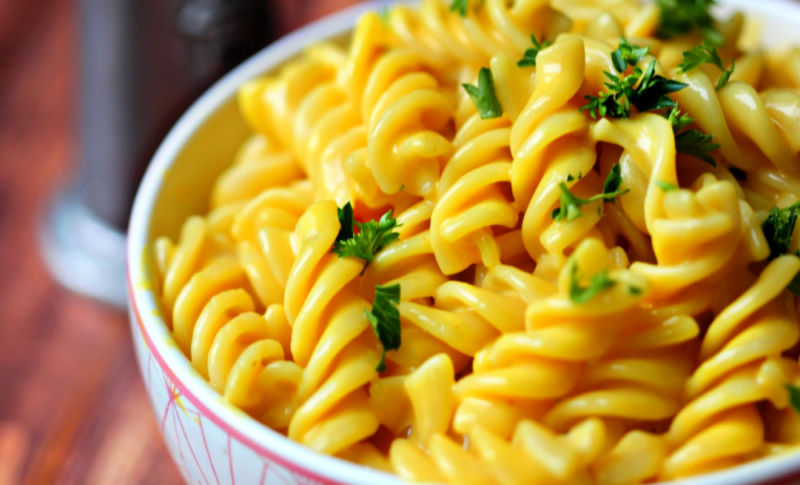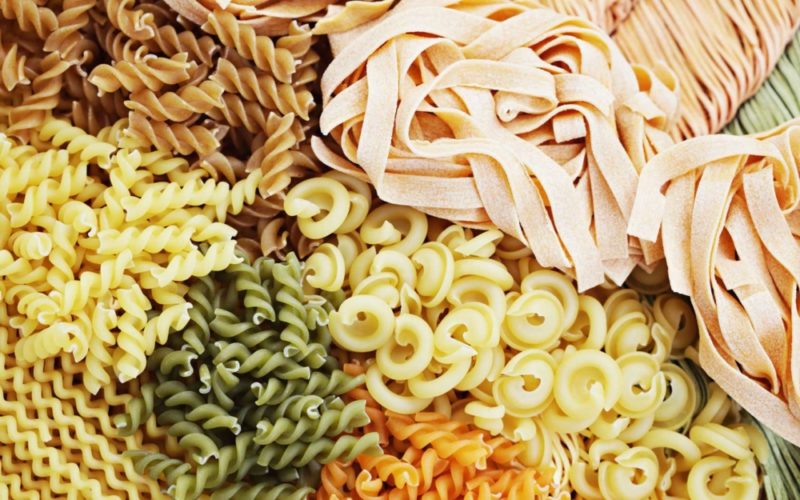Durum wheat pasta is a source of carbohydrates and an important part of the daily diet of everyone who watches their diet. You should understand how many calories in boiled pasta, in order to be able to choose the right portion while following a diet.
Material Content:
Chemical composition and nutritional value
Flour semi-finished products won universal love due to the availability and ease of preparation. Indeed, there is nothing easier than dipping the right amount in boiling water, taking time, and then rinse and serve. In addition, they quickly satisfy hunger and go well with various sauces. True, the health benefits of pasta are very doubtful, because the chemical composition of products does not differ in a large number of useful substances.
The main components of the product are starch and carbohydrates. Vitamin value of pasta is negligible. Although they contain B vitamins, macro- and microelements, their amount is so small that it can hardly somehow affect the health of the body. However, it all depends on what kind of flour this product is made of. For example, durum wheat spaghetti contains magnesium, phosphorus and calcium. They are absorbed more slowly than the produced varieties from white flour with a high degree of purification, and, therefore, saturate the body for a long time.
100 grams of the finished product contains:
- 14% of the daily value of sodium;
- 9% of the same indicator of carbohydrates;
- 6% of the required daily amount of proteins and dietary fiber;
- 3% of the norm of vitamin E, thiamine, niacin, iron and phosphorus.
Nutritional value depends on the composition that is usually listed on the package.On average, about 343-362 kcal per 100 grams of dry component.
Products from this test are divided into three types.
Group A is the most useful, this includes products made from durum wheat flour, such as Italian pasta.
These products are rich in dietary fiber and B vitamins necessary for the work of the whole body. Group B contains fewer nutrients and more calories, since such products are made from soft and glassy wheat. But it is better to refuse from group B altogether, because pasta of this type is produced from ordinary flour used for baking bread.
Calorie content and BJU in boiled pasta of different varieties
In general, there is not one really accurate table of the amount of protein, fat and carbohydrates that would be suitable for all pasta. You can conduct an investigative experiment by comparing the labels on the same packaging from different manufacturers - all data will vary slightly. Therefore, it is important to be able to independently calculate the calorie content of the finished dish. If we are talking about pasta, it should be remembered that during cooking they increase in volume by about two times. In this case, it is enough to simply calculate the nutritional value of the resulting food, for which you only need to halve the value indicated by the manufacturer on the package.
On the packaging of any product, whether it is pasta, buckwheat or rice, the calorie content of a dry product is always indicated. The nutritional value of the finished dish will have to be calculated independently.
Thus, the answer to the question of how many calories in cooked pasta depends on the calorie content of the dry product. For example, pasta from durum wheat on average contains 360 kcal. When cooking, they double in size and about 180 kcal will be contained in a one-serving portion. If you pick up a package of Italian spaghetti, you can see that their calorie content is higher - about 380 kcal (in dry form). This difference is due to the fact that in each country different standards for the manufacture of such products are adopted, which is why its nutritional value may vary. On average, the deviation is not more than 10%.
Egg pasta (noodles) contain about the same calories in dry form, but they are boiled 2.5-3 times, so the nutritional value of the finished dish is much lower - about 120-150 kcal per 100 g.
On average, a portion of a semi-finished product contains:
- 12 g of protein;
- 1.6 g of fat (of which 0.3 grams is saturated fat);
- 70 g of carbohydrates;
- 3 g of dietary fiber (fiber);
- 1 g of sugar.
Group B pasta contains more carbohydrates, but less protein and saturated fats.
Daily rate of consumption of the product
The energy value of a hundred-gram portion of the semi-finished product is approximately 7–9% of the daily norm.
It all depends on what kind of nutrition a person adheres to. The standard daily rate for an adult is about 2000 kcal. You can eat pasta as much as you want, but taking into account the total calorie content of the daily diet, it is important to adhere to a balanced diet. For example, several plates of such products will really give a feeling of satiety for the whole day, but the body will not receive all the necessary vitamins and minerals. From the point of view of nutritionists, the optimal serving for an adult is 150 g per day, while it is recommended to limit yourself to one meal a day.
Useful properties for weight loss
Durum wheat pasta will help with weight loss, but you should not abuse it. And the point here is not in calories, but in the total glycemic load. A portion of your favorite tubes or attractive curls (whoever likes it) quickly saturates and eliminates the feeling of hunger, but not for long.
The glycemic index of products of group A is about 50, and group B - 70–80 units.
This means that when you eat appetizing food, insulin levels increase dramatically, food is quickly absorbed, but soon there is a feeling of hunger again.
The value of pasta for a low-calorie diet is greatly exaggerated, because they can be replaced with other components. However, it is not necessary to completely abandon the semi-finished product, it is enough to limit yourself to a small portion and not add butter to the dish.
















